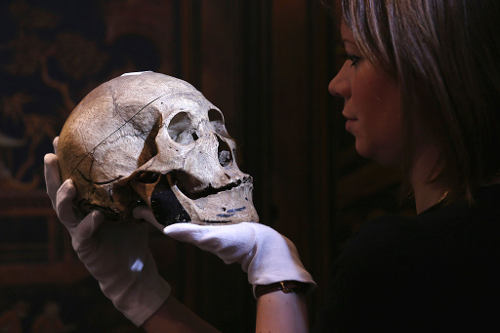 A common manifestation of headaches is when the pain comes from the base of the skull, a condition known more specifically as “occipital neuralgia.” The base of the skull is an important area that contains muscles and joints that support head mobility, along with the occipital nerves that run from the spine to the scalp. Most causes of pain at the base of the skull relate to at least one of these elements, with the occipital nerve being connected to several. Depending on the nature or cause of the pain, occipital neuralgia can either be another pain of life or end up warranting medical attention. Although any severe and unexplained head pain should be brought to your doctor, hopefully this guide can help offer insights on what signs and symptoms you should think of when discussing your case.
A common manifestation of headaches is when the pain comes from the base of the skull, a condition known more specifically as “occipital neuralgia.” The base of the skull is an important area that contains muscles and joints that support head mobility, along with the occipital nerves that run from the spine to the scalp. Most causes of pain at the base of the skull relate to at least one of these elements, with the occipital nerve being connected to several. Depending on the nature or cause of the pain, occipital neuralgia can either be another pain of life or end up warranting medical attention. Although any severe and unexplained head pain should be brought to your doctor, hopefully this guide can help offer insights on what signs and symptoms you should think of when discussing your case.
A Quick Word on Tension Headaches
Tension headaches are one of the most common causes of pain at the base of the skull. Although they do not fall under the category of occipital neuralgia (the occipital nerve is not always involved), there is enough overlap that a brief mention should be given. Tension headaches manifest as a type of dull, aching pain, accompanied by a tightening sensation along the side or back of your head, as if your skull is caught in a vice. The muscles in your neck, scalp, or shoulders may also be sore and tender as well. Tension headaches can be intermittent (episodic) or prolonged (chronic) and can be easily confused with migraines. The way they differentiate is that tension headaches are not aggravated by physical activity and don’t cause visual disturbances, nausea, or vomiting. No one really knows why tension headaches occur, but stress is thought to be a potential trigger for some sufferers.
Symptoms of Occipital Neuralgia
Occipital neuralgia can present in different ways for different people, but the symptoms share enough commonalities that a list can be drawn up. If you have occipital neuralgia, you should experience at least some of the following:
- Pain along the neck where it meets the skull and maybe along the back of the head
- Pain can be one or both-sided, aching, throbbing, sharp, stabbing, burning, or feel like an electrical shock
- Pain can feel like it is “traveling” towards the forehead
- Sensitivity to light or sound
- Scalp tenderness
- Pain when moving the neck
- The area around the occipital nerve will be tender and sensitive to pressure
Causes of Occipital Neuralgia
Due to the way, the body’s pain receptors and your nerves work, the following conditions will not always cause pain at the base of the skull, but do involve skull pain of some form in most cases.
Injury or Strain
The occipital nerves are surrounded by various muscles and joints within the base of the skull. Injury to any of these has the potential to make the nerves irritated or inflamed. Physical blows to the back of the head, sudden movements of the neck (whiplash), muscle spasms or knots, etc., all have the potential to trigger pain.
Chronic Disease
Certain chronic conditions can end up provoking the occipital nerve directly or by aggravating one of the surrounding structures. Osteoarthritis in the upper spine, gout, and cervical disc disease can inflame the joints of the neck and irritate the occipital nerves. Alternatively, the nerve may become compressed due to degenerative changes in the spine from these conditions or aging in general. Diabetes can inflame the surrounding blood vessels and contribute.
Infection
Any infection, bacterial or viral, that enters the occipital region has the potential to create inflammation and aggravate the occipital nerve. These tend to fall under the category of spinal meningitis. When caused by a virus, the condition is disruptive, but not overly dangerous. When bacterial meningitis is involved, however, the illness becomes serious and potentially fatal. Spinal meningitis’s initial symptoms include an intense headache, nausea and/or vomiting, a sudden high fever, skin rash (not universal), and a stiff neck that makes up/down motion difficult to impossible. If left untreated, bacterial meningitis can advance to a stroke, seizures, kidney failure, or brain damage.
Treatment for Occipital Neuralgia
Treating occipital neuralgia requires relieving the underlying cause. In the case of injury, rest and temperature therapy can help. For chronic diseases, medication and lifestyle changes may be required. Infections, naturally, require antivirals or antibiotics as appropriate. Your doctor will be able to diagnose the correct underlying cause and recommend the proper course of action.
Treatment for pain at the base of the skull, however, is a more straightforward subject. Anti-inflammatory, painkiller, or muscle relaxant drugs may be used to ease the strain on the occipital nerve or otherwise dull the pain you are experiencing. Depending on severity, you may need your doctor to prescribe stronger medications than what can be obtained over-the-counter. Other approaches can include using a warm compress to the back of the head for up to 20 minutes at a time and making changes to your posture to avoid unnecessarily tilting the head.
